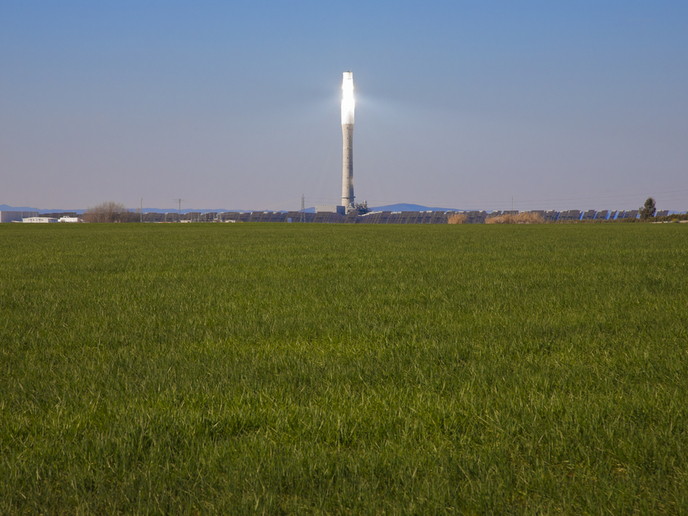Novel selective coatings improve efficiency of concentrated solar power technology
Use of solar energy collectors to harness the Sun’s power dates back to more than 2 000 years ago, when Greek scientist Archimedes used reflected sunlight to set Roman ships on fire. Modern concentrated solar power systems generate heat by using mirrors to concentrate sunlight from a large area onto a much smaller one. The heat is used to generate electricity. Due to the implementation of storage tanks, power generation can be kept stable throughout the day. Towers versus troughs Concentrating solar power technologies exist in different forms including parabolic troughs and central towers. Parabolic troughs are 1D concentrating systems – the incoming solar radiation is concentrated on a small focal line by single-axis tracking mirrors. Solar towers are basically 3D concentrators – their array of dual-axis tracking reflectors allow for optimum solar energy levels as they can follow the Sun vertically and horizontally. As a result, “Towers are much more efficient than troughs, because their concentration ratios can be 10 times higher.” With tower systems, working temperatures much higher than in parabolic troughs are possible. However, there are still many technological challenges to overcome, and one of them is the lack of good absorbing materials which can withstand temperatures of 550 °C and beyond in the long term,” notes Dr Matthias Krause who coordinated FRIENDS2(opens in new window), a project supported by the Marie Curie programme. Controlling surface radiative properties Selective multilayer coatings help to increase the operation temperature and efficiency of solar absorbers. They do so by converting a high proportion of the incident solar radiation into heat and minimising emittance in the thermal, infrared spectral region. “Material designs that are highly reflective at longer wavelengths (infrared radiation) help central receivers to retain all the absorbed heat,” explains Dr Krause. Researchers conducted cyclic testing of certain selective multilayer coatings in the laboratory environment for more than 35 days at 600 °C. One of the developed coatings demonstrated performance stability at this temperature in contrast to state-of-the-art, fast-degrading materials currently used for CSP trough and tower plants. When asked about another important achievement, Dr Krause referred to a universal principle for imparting solar selectivity to surfaces which are good absorbers, but are not selective. The related work refers to the ‘old’ principle of thermo-glasses. “When tin oxide is doped with tantalum, it becomes highly conductive and can be used as a solar selective transmitter layer on top of solar absorbers. It proved mechanically and thermally stable at very high temperatures; in ultra-high vacuum conditions, it retained its stability to 800 °C,” notes Dr Krause. Until now, indium tin oxide has been most widely used, but indium is expensive and the oxide not that stable at such high temperatures. Creating selective solar absorber systems using stable coatings that can survive high temperatures is essential for the widespread adoption of efficient, high-temperature concentrated solar power plants. Further work is required to commercialise the coatings. A challenging area to be addressed is to permit solar absorbers to collect high levels of sunlight while maintaining low thermal radiation losses.







